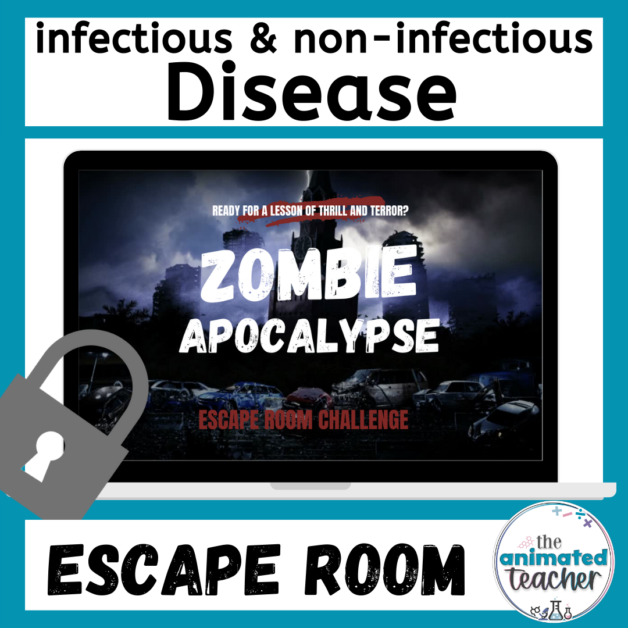
30 Best classroom pet ideas for middle school
30 Best classroom pet ideas for middle school
Having a classroom pet is a great way to increase student buy-in in the classroom. It fosters curiosity and responsibility while bringing a richness to many learning experiences in the classroom.
As a middle school science teacher I have always wanted a classroom pet and so I have set out to research what needs to be thought of on the journey to choosing the perfect pet.
So grab a coffee, find a comfy seat, and relax while we explore reasons to have a classroom pet, things to consider when choosing a classroom pet, and 30 classroom pet ideas!

5 Reasons to have a classroom pet
Having a classroom pet in a science classroom offers numerous educational benefits and enriching experiences for students. The decision to introduce a living organism into the learning environment can enhance various aspects of scientific education and foster a deeper connection between students and the natural world.
Introducing a classroom pet is a great way to increase student engagement and buy-in into the learning environment. It can increase students responsibility, revitalise the classroom environment, link learning to real examples, foster a love and care for animals and provide opportunities for reward.
Having a classroom pet can promote:
- Scientific learning: Having a classroom pet serves as a tangible and living example for students to observe biological concepts in action. Students can witness firsthand the life cycle, growth, and behavior of the chosen pet, providing a practical context to theoretical lessons. This direct exposure to biological phenomena helps to demystify scientific concepts and makes learning more engaging and memorable. For instance, observing the metamorphosis of tadpoles into frogs or tracking the development of chicks from eggs can vividly illustrate concepts such as life cycles and developmental biology.
- Interdisciplinary learning (STEAM): A classroom pet can also be a catalyst for interdisciplinary learning. Students can explore various scientific topics, such as animal behavior, anatomy, and physiology, while also incorporating elements of mathematics, language arts, and even art. For instance, they may measure and record the growth of the pet, research its natural habitat, or create artistic representations of the pet in its environment. This interdisciplinary approach not only enhances scientific understanding but also cultivates a holistic perspective on the interconnectedness of different academic disciplines.
- Teamwork: A classroom pet can instil a sense of responsibility and nurture empathy among students. Caring for a living creature requires commitment, teamwork, and attention to detail. Students can take turns feeding, cleaning, and monitoring the well-being of the pet, fostering a sense of ownership and accountability. This experience teaches valuable life skills and emphasizes the importance of empathy and compassion, qualities that extend beyond the realm of science into broader aspects of character development.
- Motivation: Furthermore, a classroom pet can serve as a motivational tool, sparking curiosity and inquiry among students. The presence of a living organism provides a constant source of fascination, prompting students to ask questions, conduct research, and seek answers independently. Teachers can leverage this natural curiosity to introduce inquiry-based learning, encouraging students to formulate hypotheses, design experiments, and draw conclusions based on their observations of the pet. This active engagement in the scientific process enhances critical thinking skills and nurtures a lifelong love for learning.
- Teachers could further capitalise on student motivation by providing rewards in the form of being able to hold the classroom pet, or look after it for the holidays etc.
- A supportive learning environment: Beyond academic benefits, a classroom pet contributes to a positive and supportive learning environment. The presence of a living, non-judgmental companion can reduce stress and anxiety among students, creating a more relaxed and enjoyable atmosphere for learning. Additionally, caring for a pet promotes a sense of community within the classroom as students collaborate and share responsibilities.
Things to consider when choosing a classroom pet
Selecting a classroom pet is a decision that involves careful consideration of various factors to ensure the well-being of the pet, the safety of students, and the overall success of the educational experience. Here are some important things to consider when choosing a classroom pet:
1. Allergies:
-
- Consider the prevalence of allergies among students and staff. Some individuals may be allergic to certain animals or their dander. Ensure that the chosen pet does not pose a significant allergy risk.
2. School Policies:
-
- Check with the school administration and policies to confirm whether keeping a pet in the classroom is allowed. Some schools may have specific guidelines or restrictions regarding classroom pets.
- Check with the school administration and policies to confirm whether keeping a pet in the classroom is allowed. Some schools may have specific guidelines or restrictions regarding classroom pets.
3. Budget
-
-
It is important to consider your budget when choosing a classroom pet. It isn’t just the purchase of the pet that needs to be thought of. It is the enclosure, food, and ongoing costs associated with your pet – and some cost a lot more than others in the long run.
-
4. Maintenance Requirements:
-
- Assess the time and effort required for the care of the pet. Consider the pet’s feeding, cleaning, and medical needs. Choose a pet that aligns with the available resources and the level of commitment the class (and you) can provide.
5. Space and Housing:
-
- Evaluate the available space in the classroom for the pet’s habitat. Ensure that the housing arrangement meets the specific needs of the chosen animal in terms of size, temperature, and environmental enrichment. Also consider location of power points if you are going to opt for a classroom pet that required uv light. Generally, small animals need smaller spaces.
6. Lifespan and Growth:
-
- Consider the lifespan of the pet and how it aligns with the school year or the duration of the class. Some animals have longer lifespans and may require care beyond the academic year. Additionally, consider the potential growth of the pet and whether the classroom setup can accommodate it.
7. Educational Value:
-
- Choose a pet that aligns with the educational goals of the class. Consider the opportunities the pet provides for hands-on learning, observation, and the reinforcement of scientific concepts.
8. Safety:
-
- Prioritize the safety of students and the pet. Choose a species with a mild temperament and minimal risk of aggression or bites. Ensure that the pet does not pose any health or safety hazards.
- Social animals, such as small mammals, are great for young children who enjoy cuddling and patting them.
9. Allure for Students:
-
- Select a pet that captures the interest and curiosity of students. The goal is to create an engaging and positive learning experience. Consider the potential for the pet to spark discussions, questions, and research.
10. Nocturnal vs. Diurnal:
-
- Consider the activity patterns of the pet. Nocturnal animals may be less active during class hours, limiting the opportunities for observation and interaction. Diurnal animals are active during the day and may be more suitable for a classroom setting.
11. Ethical Considerations:
-
- Reflect on the ethical implications of keeping a particular species as a pet. Ensure that the pet trade and captivity do not negatively impact wild populations. Consider adopting from reputable sources and promoting responsible pet ownership.
12. Long-Term Commitment:
-
- Recognize that a classroom pet is a long-term commitment. Consider the responsibilities beyond the initial excitement, such as care during weekends, holidays, and breaks.
13. Accessibility:
-
- Choose a pet that is readily available and legal to keep as a classroom pet. Check local and state regulations regarding the ownership of certain species. Check whether you need a license. Also check the local pet store as to what is readily available and easy to source the food requirements for it.
14. Noise Level:
-
- Consider the noise level associated with the chosen pet. Some animals, such as birds or rodents, may generate noise that could affect the learning environment.
30 Best Classroom Pet Ideas (in no particular order)
Choosing the best classroom pets for middle school involves considering factors such as ease of care, educational value, and safety. Here are 30 suggestions:
- Fish (Betta, Guppies): Low maintenance and visually appealing.
- Guinea Pigs: Social and gentle pets that are easy to handle.
- Rabbits: Friendly and can be litter trained.
- Hamsters: Easy to care for and entertaining to watch.
- Hermit Crabs: Fascinating creatures with low maintenance needs.
- Snails: Unique and low-maintenance pets.
- Turtles: Educational and relatively low-maintenance.
- Axolotls: Unique aquatic pets with regenerative abilities.
- Ant Farm: Provides an opportunity to observe a colony at work.
- Stick Insects: Low maintenance and fascinating to observe.
- Rats: Intelligent and sociable pets.
- Chinchillas: Soft and cuddly with specific care requirements.
- Birds (Budgies, Cockatiels): Interactive and can mimic sounds.
- Geckos: Easy to care for and visually interesting.
- Bearded Dragons: Docile and educational reptiles.
- Hedgehogs: Quirky and interesting pets.
- African Dwarf Frogs: Aquatic pets that are easy to care for.
- Tarantulas: Fascinating for students interested in arachnids.
- Giant African Land Snails: Unique and easy to care for.
- Millipedes: Low maintenance and interesting to observe.
- Parakeets: Social birds that can be taught tricks.
- Sugar Gliders: Unique, social, and somewhat exotic.
- Stick Insects: Low-maintenance and interesting to observe.
- Garter Snakes: Educational and relatively low maintenance.
- Giant Day Geckos: Colorful and visually appealing.
- Ferrets: Energetic and playful, but require more space.
- Dwarf Hamsters: Smaller and often more social than other hamsters.
- African Clawed Frogs: Aquatic pets with interesting behaviors.
- Blue-tongued Skinks: Docile and educational reptiles.
- Beta Fish: Colorful and low-maintenance aquatic pets.
Conclusion
Having a classroom pet bring so much educational richness to the classroom. It promotes student involvement, intrigue, responsibility and hands-on learning.
Please comment with your favorite classroom pet ideas for middle school below!
Note: Always consult your school’s specific safety guidelines and policies, and seek guidance from experienced colleagues or administrators when in doubt about safety protocols.
About the Author

Station activities for middle school






























